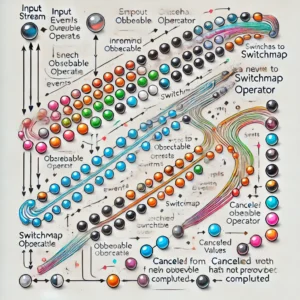The software development process can be complex and time-consuming. However, there are ways to simplify this process and make it more efficient. One such way is through the use of design patterns, which are reusable solutions to common software development problems. One of the most popular design patterns is the Factory Method pattern.
The Factory Method pattern is a creational design pattern that provides an interface for creating objects in a superclass, but allows subclasses to alter the type of objects that will be created. This pattern is useful in situations where you need to create multiple objects that share some common functionality, but differ in other ways. By using the Factory Method pattern, you can create objects without having to know their exact class, which can simplify your code and make it easier to maintain.
In this article, I will explore the Factory Method pattern in depth, explaining how it works and providing examples of how it can be used in software development. I will also discuss the benefits of using this pattern, including increased efficiency, flexibility, and maintainability. By the end of this article, you will have a solid understanding of the Factory Method pattern and how it can help you unlock efficiency in your software development process.
The Concept of the Software Factory
As a software engineer, I have come across the term “software factory” several times. In this section, I will explain what it means and how it relates to software development.
Origins of the Factory Method Pattern
The concept of the software factory is rooted in the Factory Method design pattern. The Factory Method pattern is a creational pattern that provides an interface for creating objects in a superclass, but allows subclasses to alter the type of objects that will be created. This pattern is used to solve the problem of creating objects without specifying the exact class of object that will be created.
The Factory Method pattern was first described by Christopher Alexander in his book “A Pattern Language,” but it was not until the early 1990s that it was applied to software development. The term “software factory” was coined by Grady Booch in his book “Object-Oriented Analysis and Design with Applications.”
Software Development as a Manufacturing Process
The software factory concept takes the Factory Method pattern to the next level by treating software development as a manufacturing process. In a software factory, software development is organized as a series of steps, each of which is designed to produce a specific output. These steps can be automated and standardized to increase efficiency and reduce errors.
The software factory approach is based on the idea that software development can be treated like any other manufacturing process. Just as a car factory produces cars, a software factory produces software. By standardizing the process and automating as much as possible, a software factory can produce high-quality software more efficiently than traditional software development methods.
In conclusion, the software factory concept is based on the Factory Method design pattern and treats software development as a manufacturing process. By standardizing and automating the software development process, a software factory can produce high-quality software more efficiently than traditional software development methods.
Key Principles of the Factory Method Pattern
As a software design pattern, the Factory Method Pattern is used to define a runtime interface for creating objects. It is one of the most commonly used design patterns in software engineering, and it is widely used to create objects that are required by an application. Here are the key principles of the Factory Method Pattern.
Encapsulation of Object Creation
The Factory Method Pattern encapsulates object creation by providing an interface for creating objects. This interface allows clients to create objects without knowing about the details of object creation. By encapsulating object creation, the Factory Method Pattern allows for greater flexibility and maintainability in the code. Clients can create objects without knowing about the details of object creation, which makes the code easier to maintain and update.
Polymorphism and Flexibility
The Factory Method Pattern supports polymorphism and flexibility by allowing for the creation of objects of different types. By using an interface to create objects, the Factory Method Pattern allows for the creation of objects of different types, which can be useful in situations where objects need to be created dynamically at runtime. This flexibility allows for greater adaptability in the code, which can be useful in situations where requirements change frequently.
Separation of Concerns
The Factory Method Pattern separates concerns by separating the responsibility for object creation from the rest of the code. By separating the responsibility for object creation, the Factory Method Pattern allows for greater modularity and flexibility in the code. This separation of concerns can be useful in situations where the code needs to be updated or modified frequently, as it allows for changes to be made to the code without affecting other parts of the system.
In summary, the Factory Method Pattern is a powerful design pattern that encapsulates object creation, supports polymorphism and flexibility, and separates concerns. By using this pattern, developers can create more flexible and maintainable code that is better suited to the needs of the application.
Implementing the Factory Method Pattern
The Factory Method Pattern is a creational design pattern that allows for the creation of objects without specifying the exact class of object that will be created. This pattern is useful in situations where there are multiple variations of a product that can be created, and the exact type of product needed is not known until runtime. In this section, I will discuss the implementation of the Factory Method Pattern using C# or Java.
Defining the Creator Class
The first step in implementing the Factory Method Pattern is to define an abstract Creator class. This class defines the factory method that will be used to create the product objects. The Creator class can also define additional methods that are used to manipulate the product objects after they are created.
In Java, the Creator class can be defined as an abstract class or an interface. In C#, the Creator class can be defined as an abstract class or an interface using the keyword “interface”.
Creating Concrete Products
The next step in implementing the Factory Method Pattern is to create concrete Product classes that implement the Creator class. Each Product class represents a specific variation of the product that can be created by the factory method.
In Java, the Product classes can be defined as concrete classes that implement the Creator class. In C#, the Product classes can be defined as classes that implement the interface defined by the Creator class.
Managing Product Variations
The final step in implementing the Factory Method Pattern is to manage the variations of the product that can be created. This can be done by using a switch statement or an if-else statement to determine which concrete Product class to create based on the input parameters.
In Java, the switch statement can be used to determine which concrete Product class to create. In C#, the if-else statement can be used to determine which concrete Product class to create.
By following these steps, the Factory Method Pattern can be implemented in C# to create objects without specifying the exact class of object that will be created. This pattern is useful in situations where there are multiple variations of a product that can be created, and the exact type of product needed is not known until runtime.
Step by step code example using C#
This C# example demonstrates the implementation of the Factory Method Pattern using a scenario involving the creation of different types of documents.
- Document Interface (
IDocument):- The
IDocumentinterface declares methodsOpen()andClose()that all documents should implement.
- The
- Concrete Document Classes (
Resume,Report):- Concrete classes
ResumeandReportimplement theIDocumentinterface and provide their own implementations forOpen()andClose()methods.
- Concrete classes
- DocumentFactory Interface (
IDocumentFactory):- The
IDocumentFactoryinterface declares a methodCreateDocument()that will be implemented by concrete document factories.
- The
- Concrete Factories (
ResumeFactory,ReportFactory):ResumeFactoryandReportFactoryimplement theIDocumentFactoryinterface.- Each factory class provides its own implementation of
CreateDocument(), returning instances of specific document types (Resume,Report).
- Usage in Main Method:
- Inside the
Main()method, instances of concrete factories (ResumeFactory,ReportFactory) are created. - These factories are then used to create instances of specific documents (
Resume,Report) using theCreateDocument()method. - Finally, operations like
Open()andClose()are performed on the created documents.
- Inside the
using System;
// Define the Document interface
public interface IDocument
{
void Open();
void Close();
}
// Create concrete classes implementing the Document interface
public class Resume : IDocument
{
public void Open()
{
Console.WriteLine("Opening Resume");
}
public void Close()
{
Console.WriteLine("Closing Resume");
}
}
public class Report : IDocument
{
public void Open()
{
Console.WriteLine("Opening Report");
}
public void Close()
{
Console.WriteLine("Closing Report");
}
}
// Define the DocumentFactory interface
public interface IDocumentFactory
{
IDocument CreateDocument();
}
// Create concrete factories for each type of document
public class ResumeFactory : IDocumentFactory
{
public IDocument CreateDocument()
{
return new Resume();
}
}
public class ReportFactory : IDocumentFactory
{
public IDocument CreateDocument()
{
return new Report();
}
}
// Usage example
class Program
{
static void Main(string[] args)
{
// Creating factories for each type of document
IDocumentFactory resumeFactory = new ResumeFactory();
IDocumentFactory reportFactory = new ReportFactory();
// Using the factories to create specific documents
IDocument resume = resumeFactory.CreateDocument();
IDocument report = reportFactory.CreateDocument();
// Using the created documents
resume.Open();
resume.Close();
report.Open();
report.Close();
}
}Advantages of the Factory Method Pattern
Here are some of the key advantages of the Factory Method Pattern:
Code Maintainability and Scalability
One of the main advantages of the Factory Method Pattern is that it makes code more maintainable and scalable. By abstracting the instantiation of objects into a separate method, the calling class is decoupled from the implementation details of the object creation process. This means that changes to the object creation logic can be made in one place, without affecting the rest of the codebase. Additionally, the Factory Method Pattern makes it easier to add new types of objects to the system, as each new object type can be created by implementing a simple interface.
Ease of Integration and Testing
Another advantage of the Factory Method Pattern is that it makes integration and testing easier. By abstracting the object creation process into a separate method, the calling class can be more easily tested in isolation. Additionally, the Factory Method Pattern makes it easier to mock object creation in unit tests, as the object creation logic is encapsulated in a separate method.
Customization and Extension
Finally, the Factory Method Pattern enables customization and extension of object creation logic. By implementing a simple interface, new object types can be easily added to the system. Additionally, the Factory Method Pattern can be used to implement custom object creation logic for specific use cases. For example, a Factory Method can be used to create objects that are configured with specific settings or dependencies, or to create objects that are optimized for specific performance characteristics.
In summary, the Factory Method Pattern is a powerful tool for unlocking efficiency in software development projects. By improving code maintainability and scalability, easing integration and testing, and enabling customization and extension of object creation logic, the Factory Method Pattern can help developers to build better software in less time.
Real-World Applications
The Factory Method pattern is a powerful tool for creating objects in software development. It has many real-world applications, including in framework and library design, and dynamic system configuration.
Framework and Library Design
The Factory Method pattern is often used in framework and library design to provide a flexible and extensible interface for creating objects. By using the Factory Method pattern, developers can create a set of interfaces and classes that allow users to create objects without having to know the details of how they are created.
For example, the Django web framework uses the Factory Method pattern extensively to create database objects. The framework provides a set of interfaces and classes that allow developers to create and manipulate database objects without having to know the details of how they are created.
Dynamic System Configuration
The Factory Method pattern is also useful in dynamic system configuration. In systems with complex object creation requirements, the Factory Method pattern can be used to create objects at runtime based on user input or other dynamic factors.
For example, in a system that requires the creation of different types of widgets based on user input, the Factory Method pattern can be used to create the appropriate widget at runtime. This allows for a more flexible and dynamic system that can adapt to changing requirements.
Overall, the Factory Method pattern is a powerful tool for creating objects in software development. Its real-world applications are numerous, and it is an essential pattern to understand for any developer working with object-oriented programming.
Challenges and Considerations
Complexity and Overhead
As with any design pattern, the Factory Method Pattern introduces additional complexity and overhead to a software system. Implementing the pattern requires creating additional classes and interfaces, which can make the codebase more difficult to navigate and understand. Additionally, the use of factories can introduce additional layers of abstraction, which can make debugging and testing more difficult.
To mitigate these challenges, it is important to carefully consider the use cases for the Factory Method Pattern and to ensure that it is being used appropriately. In some cases, a simpler design pattern or approach may be more appropriate and effective.
Appropriate Use Cases
The Factory Method Pattern is most effective when used in situations where there is a need to create objects dynamically or when there are multiple potential implementations of a given object. For example, the pattern can be useful in situations where there are multiple types of products that need to be created, but the specific type of product is not known until runtime.
It is important to carefully consider the specific use cases for the Factory Method Pattern and to ensure that it is being used in a way that makes sense for the specific software system. When used appropriately, the pattern can be a powerful tool for improving efficiency and flexibility within a software system.
Comparing Factory Method to Other Design Patterns
When it comes to software design patterns, there are several different options available. Each pattern has its own strengths and weaknesses, and choosing the right one for a particular situation can be challenging. In this section, I will compare the Factory Method pattern to three other common design patterns: Abstract Factory, Singleton, and Builder.
Abstract Factory
The Abstract Factory pattern is similar to the Factory Method pattern in that it is used to create objects. However, the Abstract Factory pattern is designed to create families of related objects, rather than just a single type of object. This can be useful in situations where you need to create a group of related objects that work together.
One advantage of the Abstract Factory pattern is that it provides a way to ensure that the objects created are all compatible with each other. This can help to prevent errors and ensure that the system is working correctly. However, the Abstract Factory pattern can be more complex than the Factory Method pattern, and it may not be necessary in all situations.
Singleton
The Singleton pattern is used to ensure that only one instance of a particular class is created. This can be useful in situations where you need to ensure that there is only one instance of a particular resource, such as a database connection or a configuration object.
One advantage of the Singleton pattern is that it can help to simplify the code by ensuring that there is only one instance of a particular class. However, the Singleton pattern can also make it more difficult to test the code, since the Singleton instance is shared across the entire system.
Builder
The Builder pattern is used to create complex objects by breaking them down into smaller, simpler objects. This can be useful in situations where you need to create objects that have many different properties or options.
One advantage of the Builder pattern is that it can help to simplify the code by breaking down complex objects into smaller, simpler objects. However, the Builder pattern can also make the code more complex by introducing additional classes and interfaces.
Overall, each of these design patterns has its own strengths and weaknesses, and choosing the right one for a particular situation depends on a variety of factors. The Factory Method pattern is a useful pattern for creating objects, and it is often used in combination with other patterns to create more complex systems.
Future Trends in Software Design Patterns
As software development continues to evolve, so do the trends in software design patterns. In this section, I will explore two future trends that are expected to influence the way software design patterns are used in the future.
Influence of AI and Machine Learning
With the rise of artificial intelligence (AI) and machine learning (ML), there is a growing need for software design patterns that can handle the complexities of these technologies. As AI and ML become more prevalent, software developers will need to create more robust and scalable systems that can handle large amounts of data and complex algorithms.
One example of a software design pattern that is well-suited for AI and ML is the Observer pattern. This pattern allows objects to be notified of changes to other objects, which is useful for tracking changes in data and triggering actions based on those changes.
Another pattern that is useful for AI and ML is the Strategy pattern. This pattern allows developers to define a family of algorithms and encapsulate each one, making it easy to switch between them as needed. This is particularly useful for machine learning algorithms, which often require multiple algorithms to be tested and compared.
Adaptation to Microservices Architecture
Another trend in software design patterns is the adaptation to microservices architecture. Microservices architecture is a way of designing software as a collection of small, independent services that communicate with each other through APIs. This approach allows for greater flexibility and scalability, as each service can be developed and deployed independently.
One pattern that is well-suited for microservices architecture is the Factory Method pattern. This pattern allows developers to define an interface for creating objects, but lets subclasses decide which class to instantiate. This is useful in a microservices architecture because it allows each service to create its own objects as needed, without relying on a centralized object creation process.
Another pattern that is useful for microservices architecture is the Adapter pattern. This pattern allows developers to convert the interface of one class into another interface that clients expect. This is useful in a microservices architecture because different services may have different interfaces, but need to communicate with each other through a common interface.
In conclusion, as software development continues to evolve, so do the trends in software design patterns. AI and ML are driving the need for more robust and scalable patterns, while microservices architecture is driving the need for more flexible and adaptable patterns. By staying up-to-date with these trends, software developers can create more efficient and effective systems that meet the needs of their users.
Further Reading and Resources
Books:
- “Design Patterns: Elements of Reusable Object-Oriented Software” by Erich Gamma, Richard Helm, Ralph Johnson, John Vlissides – Often referred to as the “Gang of Four” book, it covers the Factory Method Pattern along with other design patterns.
- “Head First Design Patterns” by Eric Freeman, Elisabeth Robson, Bert Bates, Kathy Sierra – A beginner-friendly book explaining design patterns with practical examples, including the Factory Method.
Online Resources:
- Dive Into Design Patterns – Factory Method Pattern (https://refactoring.guru/design-patterns/factory-method) – Provides a comprehensive explanation with examples and diagrams.
- Design Patterns in C# (https://www.dofactory.com/net/design-patterns) – This website offers detailed explanations and examples of design patterns in C#, including the Factory Method.
- GeeksforGeeks – Factory Method Design Pattern in Java (https://www.geeksforgeeks.org/factory-method-design-pattern-in-java/) – Although it’s for Java, the concepts are applicable across languages, and this resource gives a clear overview with examples.
Tutorials and Videos:
- YouTube – Factory Method Design Pattern – Christopher Okhravi (https://www.youtube.com/watch?v=EcFVTgRHJLM) – A visual explanation of the Factory Method Pattern with code examples.
- Pluralsight – “C# Design Patterns: Factory Method” (https://www.pluralsight.com/courses/c-sharp-design-patterns-factory-method) – An in-depth course explaining the Factory Method Pattern and its implementation in C#.
Documentation:
- Microsoft Documentation on Factory Method Pattern in C# (https://docs.microsoft.com/en-us/dotnet/standard/design-guidelines/using-factory) – Microsoft’s documentation offers insights into using the Factory Method Pattern in C#.
- Python Documentation on Factory Method Pattern (https://sourcemaking.com/design_patterns/factory_method) – Though not specific to C#, this documentation provides a comprehensive overview and practical insights into the Factory Method Pattern.






